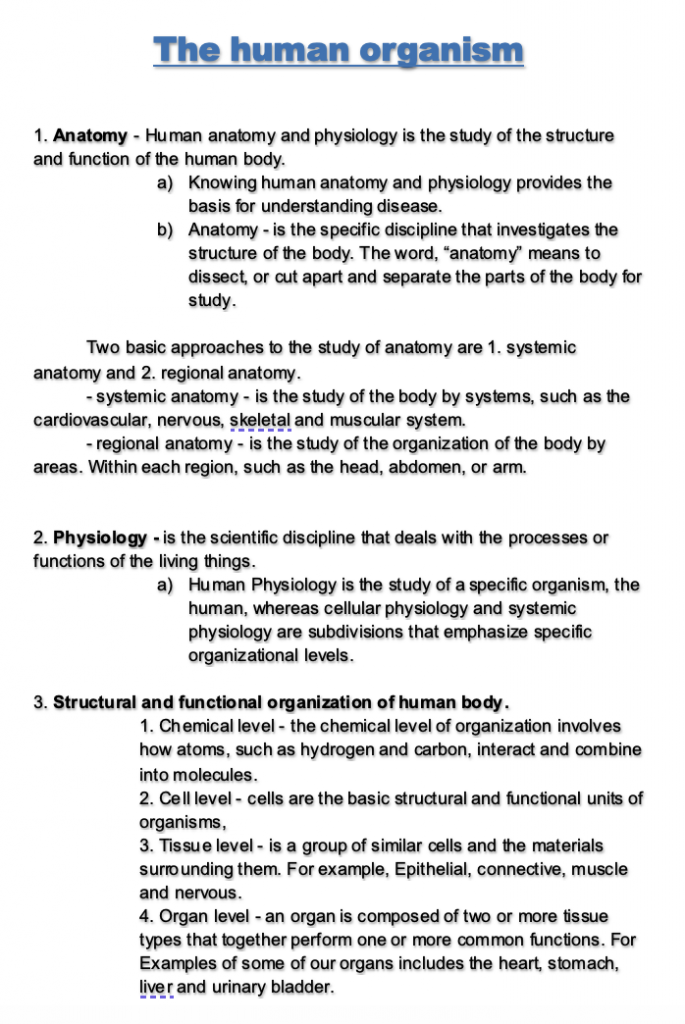Human Anatomy and Physiology
Summary:
The human organism is a complex structure comprising various levels of the organization, including anatomy and physiology. Anatomy investigates the body’s structure, while physiology studies its functions. The body’s structural and functional organization encompasses the chemical, cell, tissue, organ, organ system, and organism levels. Key characteristics of life include organization, metabolism, responsiveness, growth, development, and reproduction. Homeostasis maintains a stable internal environment through negative and positive feedback mechanisms. Major organ systems, such as the integumentary, skeletal, muscular, nervous, endocrine, cardiovascular, lymphatic, respiratory, digestive, urinary, female and male reproductive systems, perform crucial functions necessary for survival and overall well-being.
Excerpt:
Human Anatomy and Physiology
The human organism
1. Anatomy – Human anatomy and physiology is the study of the structure and function of the human body.
- Knowing human anatomy and physiology provides the basis for understanding disease.
- Anatomy – is the discipline that investigates the structure of the body. “anatomy” means to dissect, or cut apart and separate the body parts for study.
Two basic approaches to studying anatomy are 1. systemic anatomy and 2. regional anatomy.
- Systemic anatomy – is the study of the body by systems, such as the cardiovascular, nervous, skeletal and muscular systems.
- Regional anatomy – the study of the organization of the body by areas. Within each region, such as the head, abdomen, or arm.
2. Physiology – is the scientific discipline that deals with the processes or functions of living things.
Human Physiology is the study of a specific organism, the human, whereas cellular and systemic physiology are subdivisions emphasising specific organizational levels.
3. Structural and functional organization of the human body.
- Chemical level – the chemical level of organization involves how atoms, such as hydrogen and carbon, interact and combine into molecules.
- Cell level – cells are the basic structural and functional units of organisms,
- Tissue level – a group of similar cells and the materials surrounding them. For example, Epithelial, connective, muscle and nervous.
- Organ level – an organ is composed of two or more tissue types that perform one or more common functions together, Examples of some of our organs include the heart, stomach, liver and urinary bladder.


Reviews